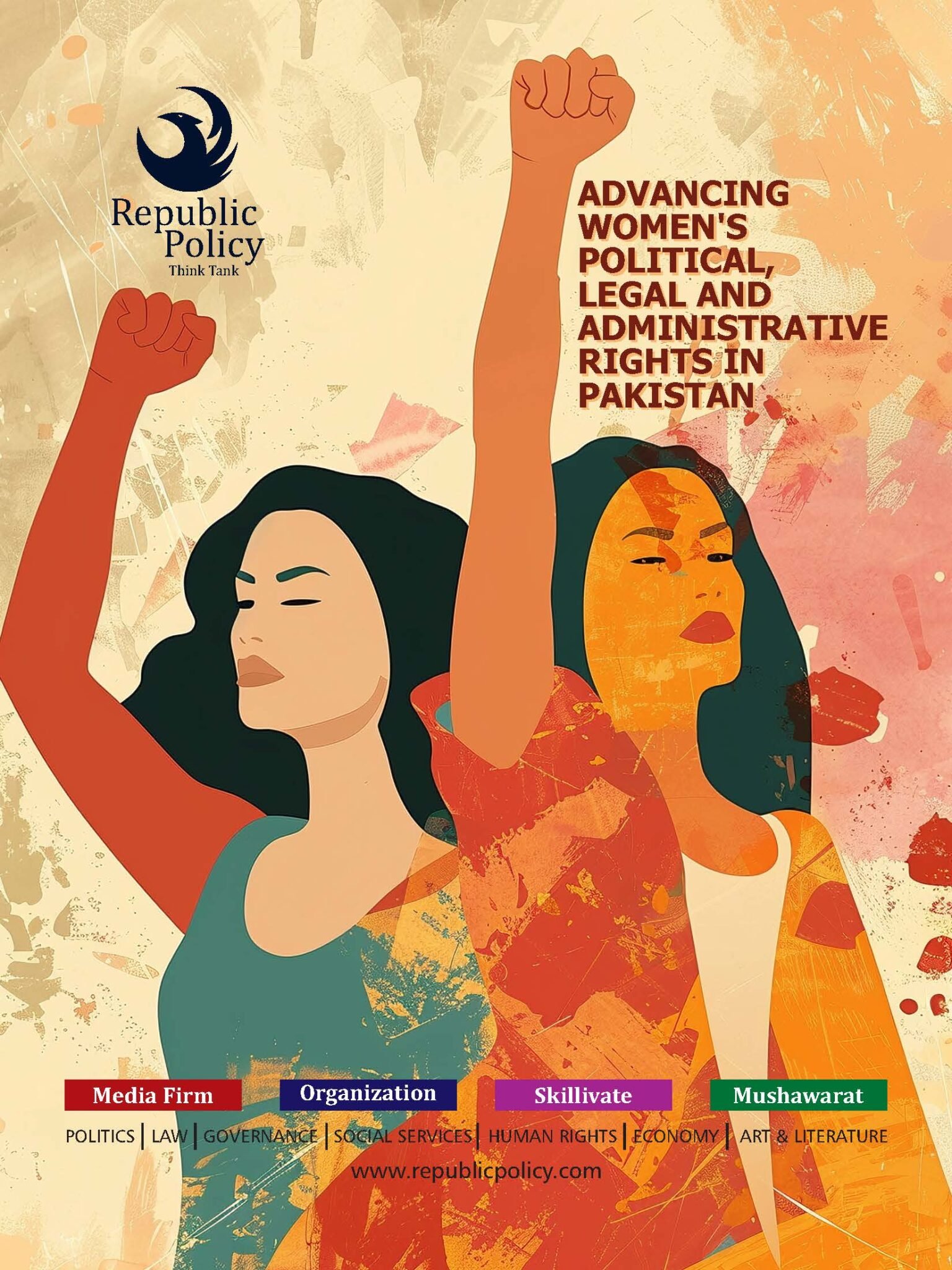Abdul Rauf
Global hunger and food security represent a complex and enduring challenge, impacting countries across cultural, economic, and geographic boundaries. The stark contrast of our modern world is evident: while some nations grapple with issues like obesity and overconsumption, others face the critical threats of malnutrition and inaccessibility to essential food resources.
Despite technological advancements and economic growth, hunger and food security remain inadequately addressed. Millions worldwide still grapple with chronic hunger, facing unmet basic daily meal requirements and nutritional deficiencies. This predicament has severe health implications, hindering individuals’ capacity to thrive and develop intellectually.
The root causes of hunger are multiple and complex, highlighting the need for a holistic and comprehensive approach to finding solutions on a global scale. One significant factor is poverty and inequality, directly linked to a country’s economic performance. The pervasive impact of poverty is most evident in the struggle of individuals with limited resources to provide a nutritious diet for themselves and their families.
Furthermore, economic trends towards liberalization and corporate influence have led governments to distance themselves from social responsibilities, exacerbating existing inequalities and rendering marginalized populations more vulnerable to poverty and hunger. Widening economic gaps intensify the plight of those already on the fringes, making them more susceptible to the adverse effects of food insecurity.
Governments struggle to establish sufficient infrastructure and production facilities that align with the ever-growing population and its demands. In developing and underdeveloped economies, the challenge lies in limited or nonexistent access to fundamental resources like water, transportation infrastructure, and distribution networks, hindering overall growth.
Additionally, the rapidly changing climate, manifested through extreme weather events such as floods, heatwaves, and droughts, directly affects crop cycles, disrupting agricultural productivity and allied supply chains. Inadequate and tardy response to these calamities further aggravates the difficulties faced by these regions in sustaining their agricultural systems and meeting their populations’ needs.
In 1996, the World Food Summit articulated that food security could be realized when individuals consistently possess physical and economic access to an ample supply of safe and nutritious food, enabling an active and healthy life. Achieving this end requires swift and well-coordinated policy actions.
Technological advancements coupled with innovations in agriculture and food production are crucial to satisfying the escalating global demand for sustenance. Emphasizing the need for accelerated efforts and collaborative policies, this comprehensive approach can ensure that food security becomes a reality for all.
Acknowledging the gravity of the present situation, a concerted global effort exists to address hunger and enhance food security. The United Nations’ Sustainable Development Goals (SDGs) provide a vision to eliminate hunger, attain food security, improve nutrition, and foster sustainable agriculture by 2030.
Please, subscribe to the monthly magazines of republicpolicy.com
However, a sobering projection suggests that if the current trends persist, a staggering 575 million individuals will endure extreme poverty. This underscores the imperative for intensified and collaborative endeavors to meet these critical SDGs and alleviate the persistent issue of global food insecurity.
The 2023 SDGs report reveals a disturbing trend since 2015, indicating a rise in the number of people grappling with hunger and food insecurity. Various factors such as the pandemic, conflicts, climate change, and rising inequalities have added to this malaise.
The report estimates that in 2012, approximately 9.2% of the global population, roughly 735 million individuals, faced chronic hunger, marking an alarming increase of 122 million from 2019. Additionally, a staggering 2.4 billion people, accounting for about 29.6% of the global population, lacked access to adequate food, experiencing moderate to severe food insecurity.
Despite worldwide endeavors, as of 2022, around 45 million children under the age of 5 experienced wasting, 148 million faced stunted growth, and 37 million were grappling with obesity. To meet nutrition targets set for 2030, a crucial and transformative change in direction is imperative.
Pakistan faces substantial challenges in combating hunger. As per the Global Hunger Index 2023, the country holds 102nd position out of 125, earning an overall score of 26.6. This highlights a concerning scenario for a nation with a population of over 141 million, placing it as the world’s fifth-most populous country.
Pakistan’s low ranking can be attributed to various contributing factors. In 2022, severe floods caused by climate change resulted in an estimated loss of over $30 billion, occurring at a critical time for the country’s economy.
Additionally, political instability and perceived selective accountability have not only marred the overall governance system but have also contributed to negative rankings across diverse indices, encompassing hunger, corruption, and the rule of law. This intricate web of challenges complicates Pakistan’s efforts to address hunger and other broader socio-economic matters.
Global hunger and food security are two interrelated issues that affect millions of people around the world, especially in developing countries. Food security refers to the availability, access, utilization, and stability of food for all people at all times. Hunger is the state of not having enough food to meet one’s basic needs for energy and nutrients. According to the World Food Programme (WFP), more than 690 million people in the world faced acute hunger in 2020, an increase of 9 percent from 2019. Pakistan is one of the countries that faces a complex challenge of achieving food security and reducing malnutrition.
Pakistan has made significant progress in improving its food security situation over the years, thanks to its diverse agricultural production, strategic location, and resilient population. Pakistan is a staple food surplus country with overall food availability being relatively stable. However, Pakistan also faces several challenges that hinder its efforts to end hunger and malnutrition. Some of these challenges include:
- Low dietary diversity: Pakistan has a low level of dietary diversity, which means that most people consume a similar type of food throughout the year. This can lead to deficiencies in essential micronutrients such as iron, zinc, vitamin A, and iodine. A study in rural Sindh found that only 20 percent of pregnant women had dietary diversity (five categories of food commodities from amongst 10 at a population level), while among urban Islamabad it was 89 percent.
- Poor feeding practices: Pakistan has poor feeding practices among both rural and urban populations with different income quintiles. Poor feeding practices exist owing to poor knowledge, negative beliefs, perceptions, as well as family’s financial situation. An assessment of complementary feeding indicated that in Pakistan (both rural and urban areas with different income quintiles), poor feeding practices exist owing to poor knowledge, negative beliefs, perceptions, as well as family’s financial situation.
- Low demand for nutritious foods: Pakistan has low demand for nutritious foods due to various factors such as cost and affordability. The cost of diet analysis showed that low demand for a specific food is rather related to or caused by cost and affordability. Thus, addressing affordability would be key to improving the average diet in Pakistan.
- Climate change impacts: Climate change poses a serious threat to Pakistan’s food security and nutrition by affecting crop production, water availability, pest infestation, disease outbreaks, natural disasters, and displacement. According to WFP’s climate analysis report for 2020-211, climate change could reduce crop yields by up to 10 percent in some regions of Pakistan by 2050.
- COVID-19 pandemic: The COVID-19 pandemic has exposed vulnerabilities and inadequacies in Pakistan’s food systems and nutrition outcomes. The pandemic has disrupted livelihoods, increased poverty and inequality, reduced incomes and purchasing power, increased health risks and mortality rates among vulnerable groups such as women and children under five years old1. The pandemic has also affected school feeding programs that provide nutritious meals to millions of children every day.
Therefore, global hunger and food security are complex challenges that require holistic solutions involving multiple stakeholders at different levels. Pakistan needs to adopt a comprehensive approach that addresses both the supply-side (production) and demand-side (consumption) factors affecting its food systems.
Please, subscribe to the YouTube channel of republicpolicy.com

















